10 Foods to Eat to Be Healthy
With so much information about diets and how to be healthy, it can be confusing to know what to eat. In this article, we’ll review the basics of a real food diet and what foods to eat to be healthy. This article also includes a list of ten of the healthiest foods to eat everyday.
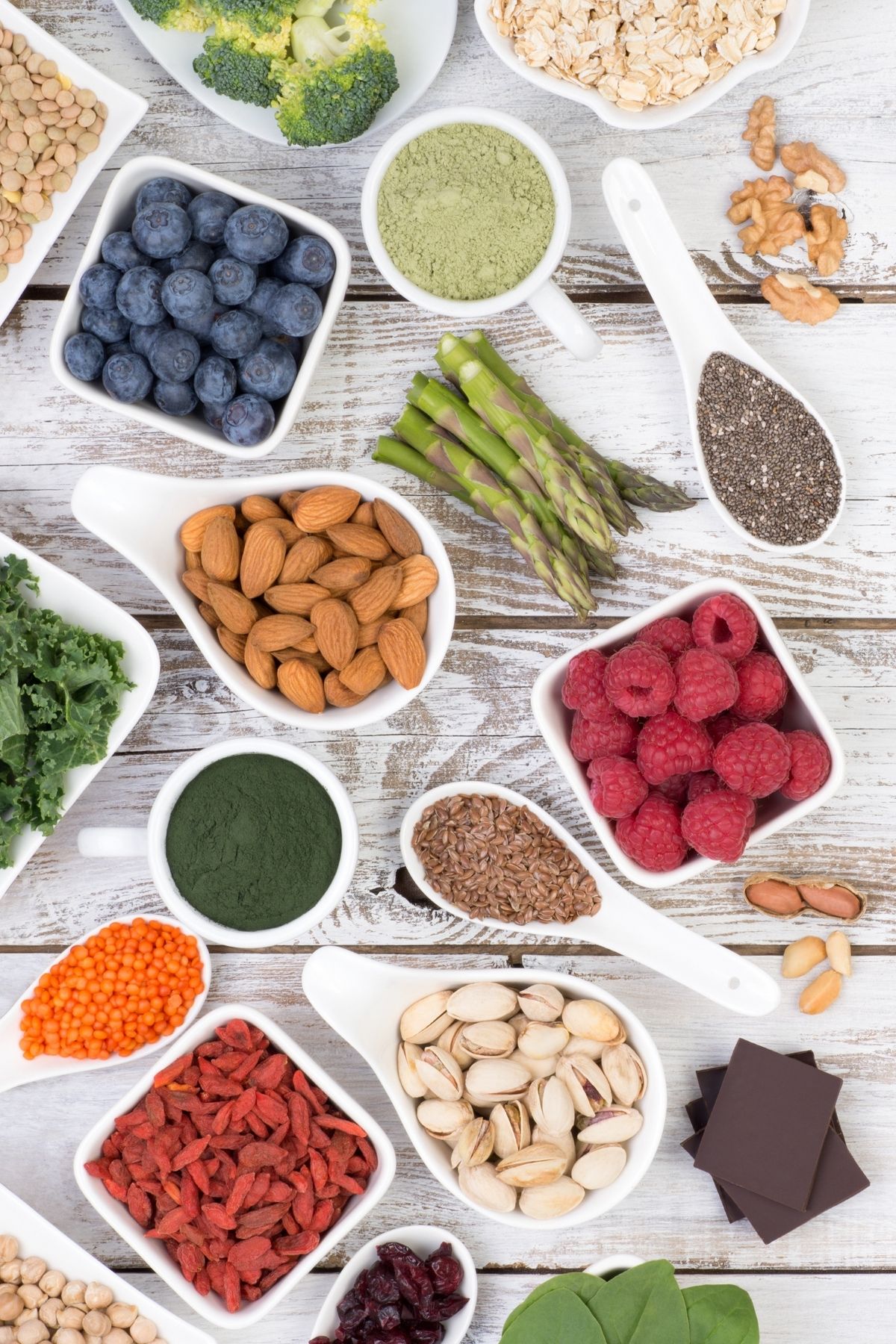
What to Eat Daily
It seems like every year there is a new diet trend. But, despite all the trends that come and go, the one thing that nutritionists and scientists seem to agree upon is that we should be eating more real, whole foods and fewer processed and ultra-processed foods.
Real foods mean those that are in their natural state and ultra-processed foods are ones that come in a box.
On average, a grown healthy woman needs somewhere in the range of 2,000 calories per day. This amount of calories can vary greatly on activity level and whether a woman is pregnant or not. Men likely need closer to 2,500 calories per day.
For some women, even where she is in her cycle will change the amount of calories she needs on any given day. Read more on how to eat for your cycle.
You may also like my articles on what to eat after a colonoscopy or the best soft foods after oral surgery.
Categories of Foods to Eat
And, of course, everyone needs a different amount of the various types of foods. We can start by looking at the average suggested intakes of macronutrients.
Macronutrients refer to the three main types of nutrients in food and include protein, fat, and carbohydrates.
A basic guideline for the amount of macronutrients within the 2,000 calories can include:
- 15-30% lean protein (0.8-2 grams per kilogram of body weight)
- 20-45% carbohydrates (depending on activity level); ideally carbs would include a mix of green vegetables and starchy vegetables
- Fat to satiety
Men and children will require slightly different breakdowns of the macronutrients, and women can have different needs based on life stages including pregnancy. You can read more about macronutrients here.
Depending on the type of food, it will have a different percentage of each macronutrient. For example, a food like chicken includes both fat and protein, while vegetables and fruit are usually comprised of mostly carbohydrates.
A balanced diet includes all three macronutrients, but how much protein, fat, and carbohydrates you eat depends on what you personally need. A registered dietitian or nutritionist can help you figure out exactly what balance of macros you need.
How to Fill Your Plate
When in doubt, you can always just fill your plate appropriately, assuming you eat about three meals a day.
The following “formula” will get most people to an appropriate macronutrient ratio and calorie minimum without worrying as much about counting grams.
- Protein: ¼ of your plate, approximately one palm to one hand
- Starchy carbohydrates: ¼ of your plate, approximately half a cup to one cup
- Non-starchy carbohydrates: ½ plate, approximately one to three cups
- Fat: about one to two tablespoons of added fat
Micronutrients
Micronutrients refer to the vitamins, minerals, and phytonutrients that are present in food. Every whole food contains micronutrients.
Some foods are particularly micronutrient-dense, such as “superfoods” like cacao, berries, and liver.
Colorful fruits and vegetables are also a great source of antioxidants, a type of phytonutrient.
Check out my lists of the purple vegetables to try or the best green vegetables and some ideas on how to eat them.
One of the big differences between real foods and processed foods is the amount of natural micronutrients.
Where real whole foods are usually packed with micronutrients, processed foods and ultra-processed foods usually do not have many naturally-occurring micronutrients.
In general, we cannot manufacture our own micronutrients, and our bodies require them in certain amounts through our food.
The US government has a daily recommended intake for each micronutrient. Deficiencies in micronutrients can lead to health problems.
10 Healthiest Foods to Eat Every Day
If you’re looking to move to a more whole food/real food diet, then you may want to consider adding the following foods to your diet. These foods are all nutrient dense and part of a healthy diet.
Please note that this list is not comprehensive or listed in order of importance. Nature has provided us with numerous healthy foods to incorporate into our diets.
1. Berries
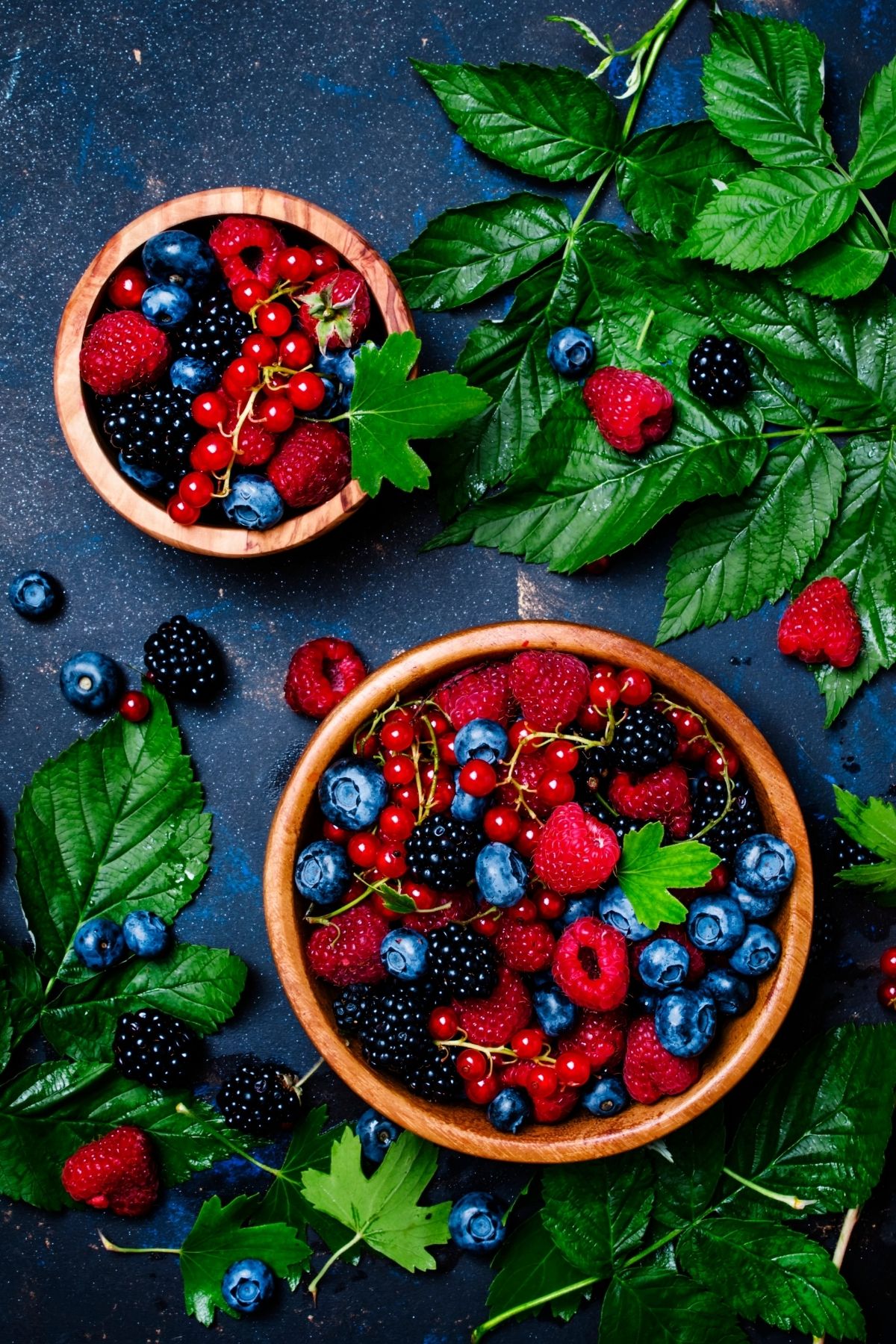
Berries like blueberries, raspberries, strawberries, and blackberries are full of antioxidants, fiber, and nutrients and have a low glycemic impact.
The health benefits of berries are well documented and should be included in most people’s daily diets.
It’s actually really easy to incorporate berries into your daily diet. Fresh strawberries, raspberries, and blueberries are excellent eaten plain as a snack or on top of yogurt for breakfast or a snack.
If fresh berries are out of season, buy frozen berries and toss them into a smoothie like my Blueberry Strawberry Smoothie or my Berry Kale Smoothie. Shoot for at least half a cup a day.
Berries will count toward your carbohydrate intake.
2. Dark leafy greens
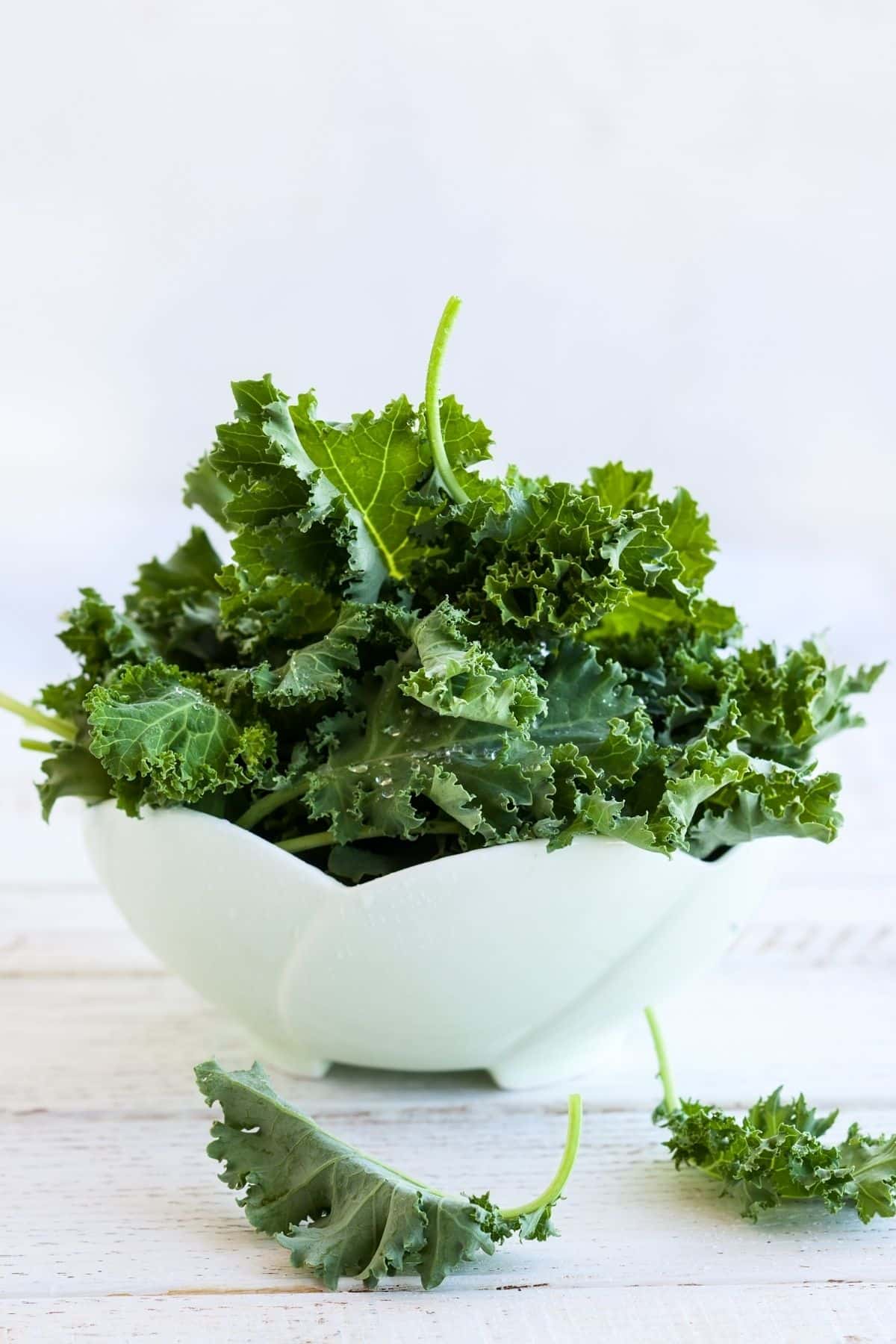
Dark leafy greens are packed with antioxidants, fiber, and nutrients.
These healthy vegetables include foods like spinach, kale, and collard greens, and are especially high in vitamin K, magnesium, and folate. Leafy greens can also be a great source of calcium!
While not everyone is interested in eating a kale salad, there are lots of other ways to incorporate leafy greens into your diet.
My favorite way is to blend them into a fruit smoothie, but you can also add greens into foods like waffles, muffins, soups, and stews.
Read my article on how to eat more green vegetables or check out this list of vegetables for picky eaters. Most people should try to eat at least one source of leafy green vegetables a day. You’ll get some carbohydrates and lots of fiber from eating your greens.
Greens are also rich in folate which is especially important if you are of child-bearing age. See my full post on the best fertility recipes.
3. Wild-caught cold-water fish
Wild-caught fish is one of the best sources of omega-3 fatty acids and also is a good source of lean protein.
Fish is considered to be very nutrient dense and part of a healthy diet. The FDA recommends consuming at least 8 ounces of fish per week for most people (children need less).
Both protein and omega-3 fatty acids are essential for your body and are important to consume daily.
For some easy recipes using fatty fish, try my Instant Pot Salmon and Potatoes, Air Fryer Baked Salmon, or Keto Canned Salmon Salad.
4. Eggs
Pasture-raised eggs contain high levels of nutrients with a desirable fat and protein ratio.
You don’t necessarily need to consume eggs daily, but most people can safely consume about 7 eggs per week. Be sure to check with your healthcare provider to make sure that eggs are okay for you.
For people who have blood sugar issues and who cannot drink smoothies, eggs can be a great breakfast food. See my list of healthy breakfast foods for kids.
Some delicious recipes using eggs include my Dairy-Free Frittata, Air Fryer Soft Boiled Eggs, and Keto Deviled Eggs.
Eggs almost make an excellent snack. See my full list of clean eating snacks.
5. Liver & Lean Protein
It is important to get quality sources of lean proteins in our diet on a daily basis.
This means foods like poultry, fish, red meat and more. If you are on a plant-based diet, then your sources of protein will either come from soy products like tofu, or will come from foods like beans that also have carbohydrates.
If you’re adventurous and can develop the taste for it, grass-fed liver provides high levels of nutrients that are difficult to find in such concentrated amounts elsewhere, such as Vitamin A in the form of retinol.
I am the first to admit that I don’t like liver and I don’t eat it. If you’re like me, you can still get the nutrients in a supplement.
Even if you don’t eat liver, you should still aim to get a large portion of your daily calories from protein sources. Protein is the building block for our muscles and also provides important vitamins for our overall nutrition.
6. Onions
An onions is part of the genus Allium, which is made up of onions, garlic, shallots, and chives. Onions have been used for centuries for both food preparation and medicinal purposes.
Onions contain many nutrients and plant-based compounds that give them their strong smell and their health benefits. There is research connecting onions to cancer prevention, heart health, and blood sugar management.
There isn’t a prescribed amount of onion to eat per day, but it’s probably a good idea to use onions and garlic in your cooking as often as you can. If you can’t tolerate them due to FODMAP or other digestive issues, try to use garlic powder or onion powder instead.
Try my recipes for Vegan Potato Leek Soup or Cabbage Vegetable Soup.
7. Sweet potatoes and other starchy root vegetables
Orange sweet potatoes, yams, and purple sweet potatoes are examples of starchy vegetables that are full of antioxidants and contain high levels of B vitamins and beta carotene.
Sweet potatoes are also a really nice source of carbohydrates. See my full list of gluten-free carbohydrates.
Unless you are on a low-carb diet due to medical reasons, then it’s important to get quality sources of carbohydrates daily. Skip the simple carbs like bread and sugary treats and try to focus on whole food carb sources like sweet potatoes and other starchy vegetables including squashes and carrots.
If you are short on time, try making a batch of Instant Pot Sweet Potatoes. You might also like my recipes for Sweet Potato Breakfast Hash or Sweet Potato Shepherd’s Pie.
8. Cruciferous vegetables
This class of vegetables includes broccoli, cauliflower, cabbage, and others.
They’re high in phytonutrients, vitamins, and minerals, and contain the anti-cancer agent sulforaphane. Try to eat a total of 2 1/2 cups a day of vegetables, with at least half of them as cruciferous veggies.
Get my Anti-Cancer Smoothie Recipe that includes frozen broccoli florets or my Cauliflower Smoothie recipe that tastes like a peanut butter milkshake. Or, go basic and make recipes like Air Fryer Broccoli or this Chicken Broccoli Rice Casserole.
Cruciferous veggies are also on my list of foods that cleanse the liver.
9. Nuts and seeds
Nuts and seeds are true nutrient powerhouses.
Nuts and seeds are high in polyunsaturated and monounsaturated fats and contain high levels of phytonutrients, antioxidants, and other vitamins and minerals.
Try to include a one-ounce serving of nuts or seeds most days of the week to get the benefits.
A great way to do this would be to make my recipe for Keto Trail Mix and keep it on hand. Grab a handful whenever you need a quick and satisfying snack.
10. Avocados and olives
Both avocados and olives are nutrient-rich sources of monounsaturated fat. Avocados are high in potassium and B vitamins while olives are high in Vitamin E.
It’s important to remember that fat is an important macronutrient. Fat helps your body absorb vitamins and minerals. Most adults should be getting between 20-35% of total calories from fat sources per day.
Need a healthy treat that is full of healthy fats? Try my Avocado Chocolate Ice Cream recipe! You may also like my article on how to freeze ripe avocados.
FAQs
It’s best to start from a baseline and adjust it to your individual needs. For someone new to healthy eating, focus on getting the majority of your calories from whole foods and avoiding processed and ultra-processed foods like fake meat, sugar-sweetened sodas, packaged baked goods, and boxed foods.
Eat a variety of colorful fruits and vegetables to vary your micronutrient intake. Always have healthy food on hand, meal prep your own food, and rotate your favorite recipes. Avoid sugar as much as possible, especially added sugars. Learn more about how to go sugar-free. You might also like my post with suggestions for how to eat clean.
If you’re eating a whole foods diet, you may still need to take supplements. That is because the soil where our food grows is often depleted of minerals. Also, our modern lifestyle often creates nutrient deficiencies that supplements can help reverse. Always check with your doctor to get personalized supplement recommendations.
You may also like these articles with Vitamins for Women Over 30 and Vitamins for Women Over 50.
Don’t Miss These Healthy Diet Articles
Ready to start eating clean but need support? Check out my Clean Eating Mini-Course that is designed for anyone new to eating a real food diet. Get my healthy shopping guide, recipes, and access to my private online support community. Join now.
Conclusions
With so many fad diets and confusing headlines about nutrition, sometimes it’s best to get back to the basics. By choosing real foods that are mostly unprocessed and unpackaged, you can easily find a balanced approach that works for you.
Remember, this list of healthy foods to eat every day is by no means comprehensive. There is a wide variety of healthy foods that are available for you to enjoy. And, since everyone is different, we all thrive on different types of diets and options.
Don’t forget to join my newsletter list to get exclusive clean eating recipes and tips. The newsletter is 100% free with no spam; unsubscribe anytime.
About the Author: Carrie Forrest has a master’s degree in public health with a specialty in nutrition and is a certified holistic nutritionist. She is a top wellness and food blogger with over 5 million annual visitors to her site. Carrie has an incredible story of recovery from chronic illness and is passionate about helping other women transform their health. Send her a message through her contact form.
Note: this post is for informational purposes only and is not intended as medical advice. Please consult your healthcare provider for recommendations related to your individual situation.


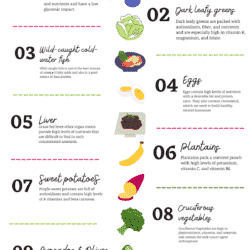
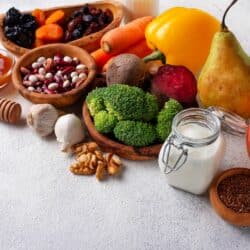
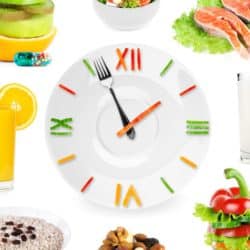
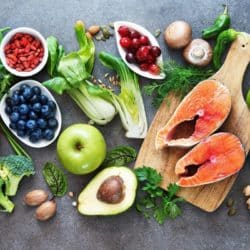




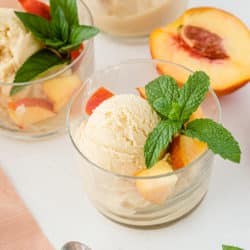
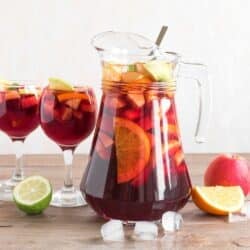









I love all the research you did. Very informative. I used to eat way too much fast food (still do honestly) but my wife and I are trying to do a better job about healthy eating since our kids were born.
It may seem like a lot of work at first when going this route however, it’s worth it! Definitely makes it better.
Such an informative post. I am always looking for healthy food to eat instead of all the junk food in my house and it is really hard to come up with a list. Thanks for sharing!!
I always feel better when I eat better. These are all such great tips!
Love love love this list! I’ve been meaning to eat healthier and cook from home more often. Thank you for this!
Kasey Ma
What a fab list! I need to incorporate these in to my day to day! Thanks so much for sharing!
Such a beautiful and informative post. In a rush to eat what’s healthy, we forget to balance and your post details every simple thing out.
I used to stick to low fat diets until about 10 years ago. I felt so much better and lost weight when I brought healthy fats back. I’m so glad we’re done being fat-phobic.
This is a very informative post and I am loving lots of the information listed here as I am trying to eat cleaner and live cleaner overall after a health scare just over a year ago. I feel amazing as compared to before my health issues and I am always looking to do even better. I picked up your Instant Pot book too 🙂
Great information! I like to fill my plate with berries, avocados, dark leafy greens, nuts, and seeds.